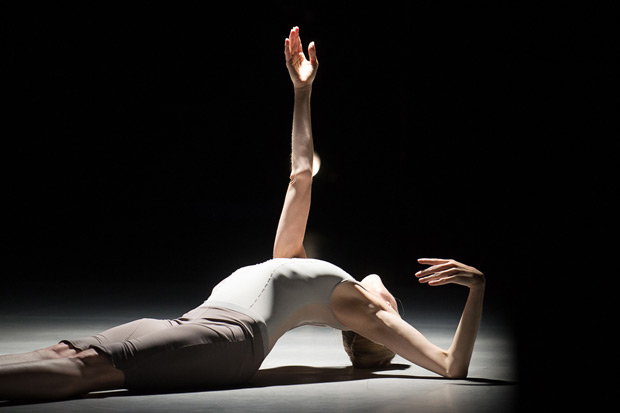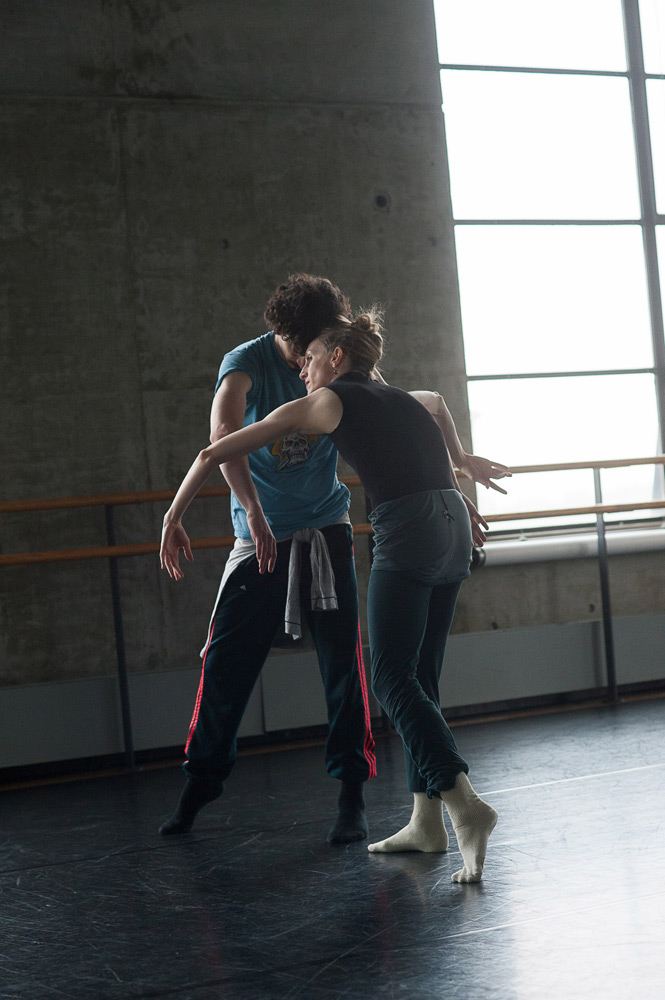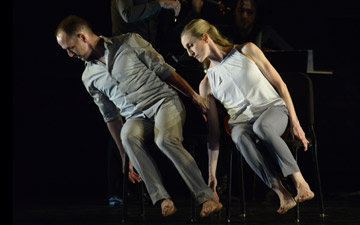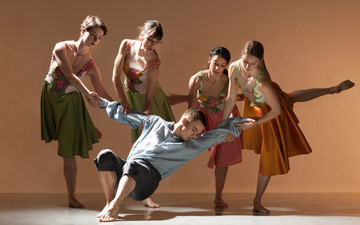
© Christopher Duggan. (Click image for larger version)
Wendy Whelan
Restless Creature: Ego et Tu, Conditional Sentences, The Serpent and the Smoke, First Fall
New York, Joyce Theater
27 May 2015
Gallery of pictures by Dave Morgan (London, 2014)
www.wendywhelan.org
www.joyce.org
Miniatures
After a full and rich career at New York City Ballet Wendy Whelan has earned the right to experiment in any way she pleases. And that’s exactly what she’s been doing; rounding up choreographers and hammering out ideas in the studio. Her evening of duets, Restless Creature, is less a “show” than a series of private conversations. The focus is inward, with the audience looking on. In her tête-à-tête with each of her interlocutors, Whelan tries on a different way of moving, a different set of colors.

© Christopher Duggan. (Click image for larger version)
The opening piece, Ego et Tu, by Alejandro Cerrudo (of Hubbard Street Dance Chicago), seems to explore the emotional bond between two partners, and perhaps also of the shifting dynamics within a partnership. The pas de deux is moody, tender, full of scrolling, twisting moves in which one body folds and unfolds around the other. The Joshua Beamish piece, Conditional Sentences, is more playful, baroque, even mannered. The two dancers compete, flirt, imitate or admire each other, either close up or from a distance. (More than once their one-upmanship reminded me of the verbal sparring in the movie Ridicule.)

© Christopher Duggan. (Click image for larger version)
In Kyle Abraham’s The Serpent and the Smoke, the focus shifts to Abraham. Ripples of movement course sensually across his arms, shoulders, and torso. In their duet, Whelan appears almost masculine, dominant. Later, on her own, she lets loose in loping runs and mysterious amoeba-like articulations. Brian Brooks’ First Fall is perhaps the most intriguing and uncompromising of all, a meditation on different ways of falling. Brooks becomes the support upon which Whelan’s body rises and falls, again and again. Dressed in black, he is almost faceless in his devotion to his task.

© Erin Baiano. (Click image for larger version)
The whole evening has the feeling of an extended experiment. We see Whelan ridding herself of ballerina habits and trying on new clothes. Learning to redefine her body without the elongation and support of the pointe shoe. (She is always in socks or barefoot.) This transformation is most convincing in her collaborations with Beamish and Abraham. Throughout, she maintains the intelligent alertness that has always characterized her stage presence.

© Christopher Duggan. (Click image for larger version)
And yet, there’s something missing. None of the works feels like much more than a movement study. The lighting design, by Joe Levasseur, is moody and stylish but provides insufficient contrast from piece to piece. So too the musical accompaniment, which relies too heavily on the repetitive, solemn ostinatos of Philip Glass and Max Richter. (Albeit well-played by a small ensemble of musicians including Rachel Kudo on piano and Tomoko Fujita on cello.) All four of the choreographers seem fascinated by Whelan’s arms, her ability to paint lines in the air and twist and curl her limbs in eddies of movement. But this is a quality Christopher Wheeldon had already explored in works like Liturgy, for New York City Ballet. If anything, the choreographers could have gone further, pushed Whelan more.
But then, Restless Creature is already two years old. (It premièred at Jacob’s Pillow in 2013.) It already feels like a rite of passage, a stop along the road toward something else, something new.

















You must be logged in to post a comment.